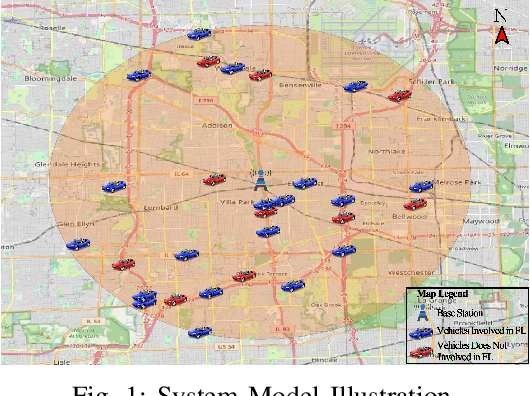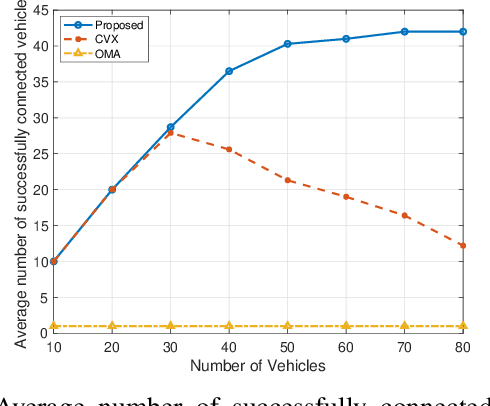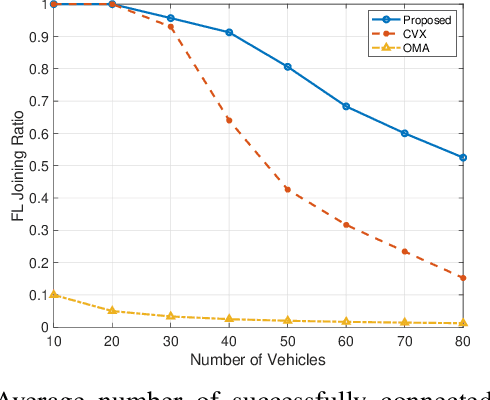Zongzhi Li
Optimizing NOMA Transmissions to Advance Federated Learning in Vehicular Networks
Aug 06, 2024



Abstract:Diverse critical data, such as location information and driving patterns, can be collected by IoT devices in vehicular networks to improve driving experiences and road safety. However, drivers are often reluctant to share their data due to privacy concerns. The Federated Vehicular Network (FVN) is a promising technology that tackles these concerns by transmitting model parameters instead of raw data, thereby protecting the privacy of drivers. Nevertheless, the performance of Federated Learning (FL) in a vehicular network depends on the joining ratio, which is restricted by the limited available wireless resources. To address these challenges, this paper proposes to apply Non-Orthogonal Multiple Access (NOMA) to improve the joining ratio in a FVN. Specifically, a vehicle selection and transmission power control algorithm is developed to exploit the power domain differences in the received signal to ensure the maximum number of vehicles capable of joining the FVN. Our simulation results demonstrate that the proposed NOMA-based strategy increases the joining ratio and significantly enhances the performance of the FVN.
 Add to Chrome
Add to Chrome Add to Firefox
Add to Firefox Add to Edge
Add to Edge